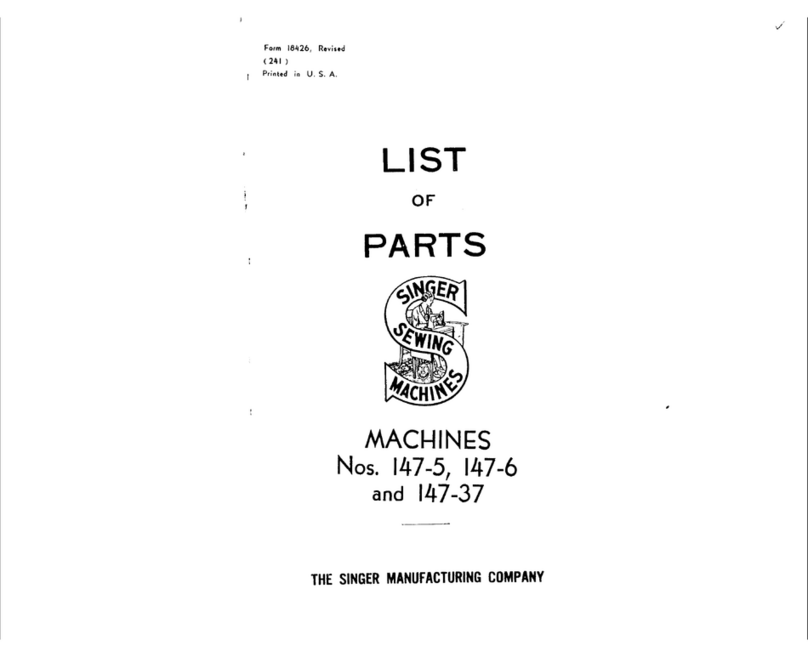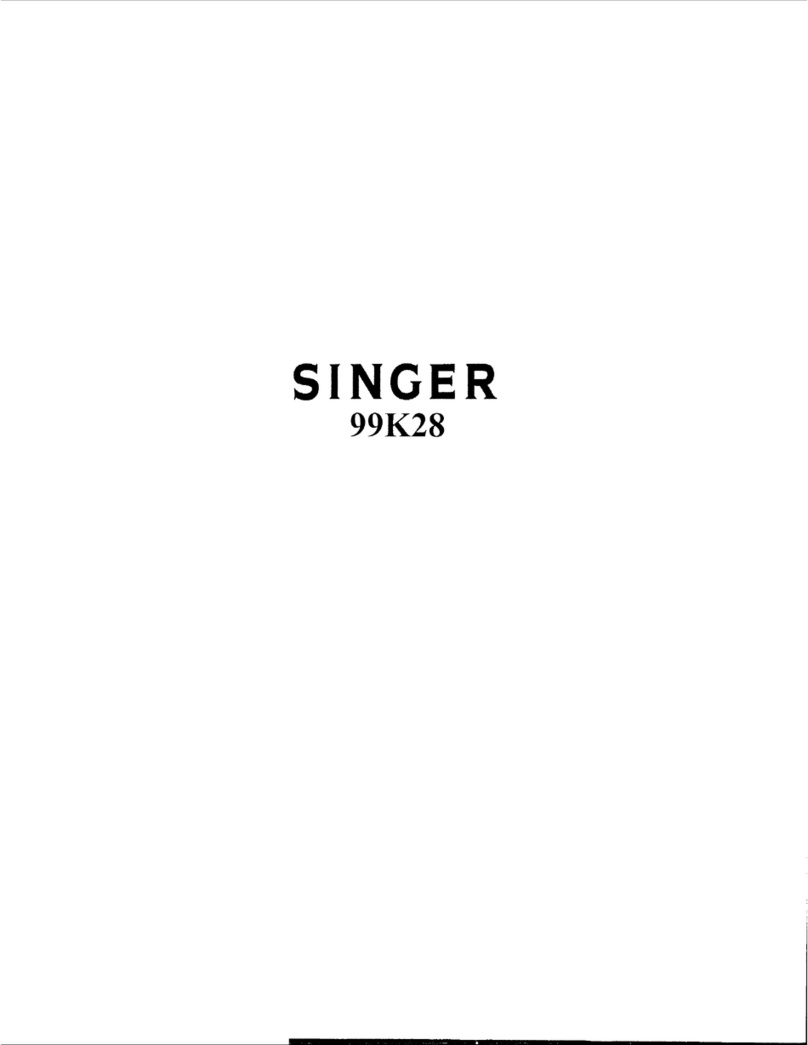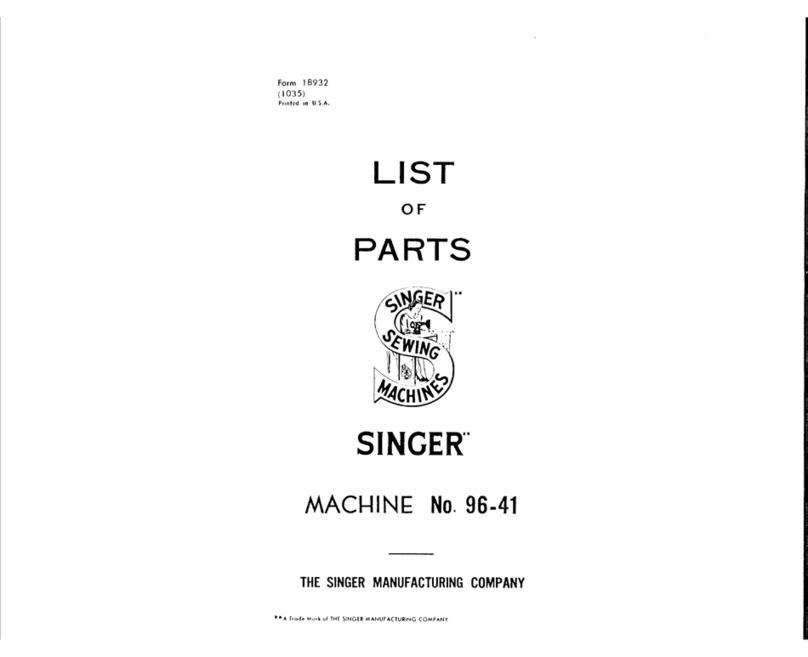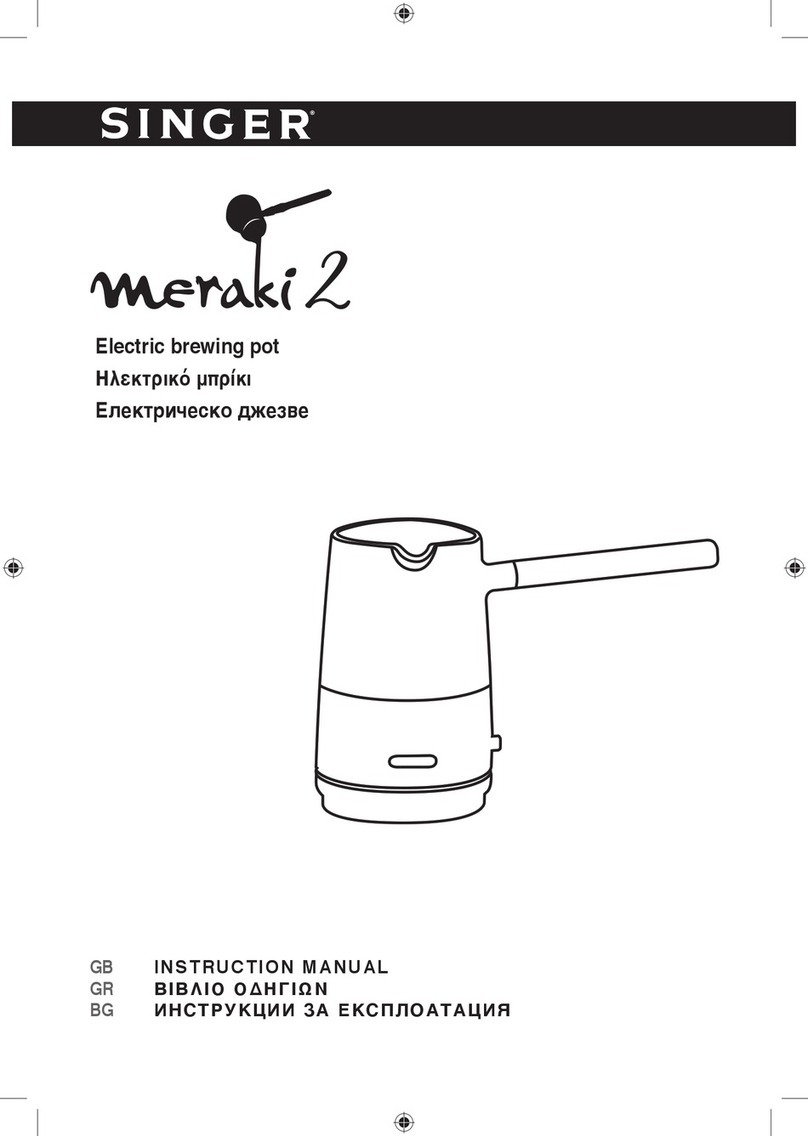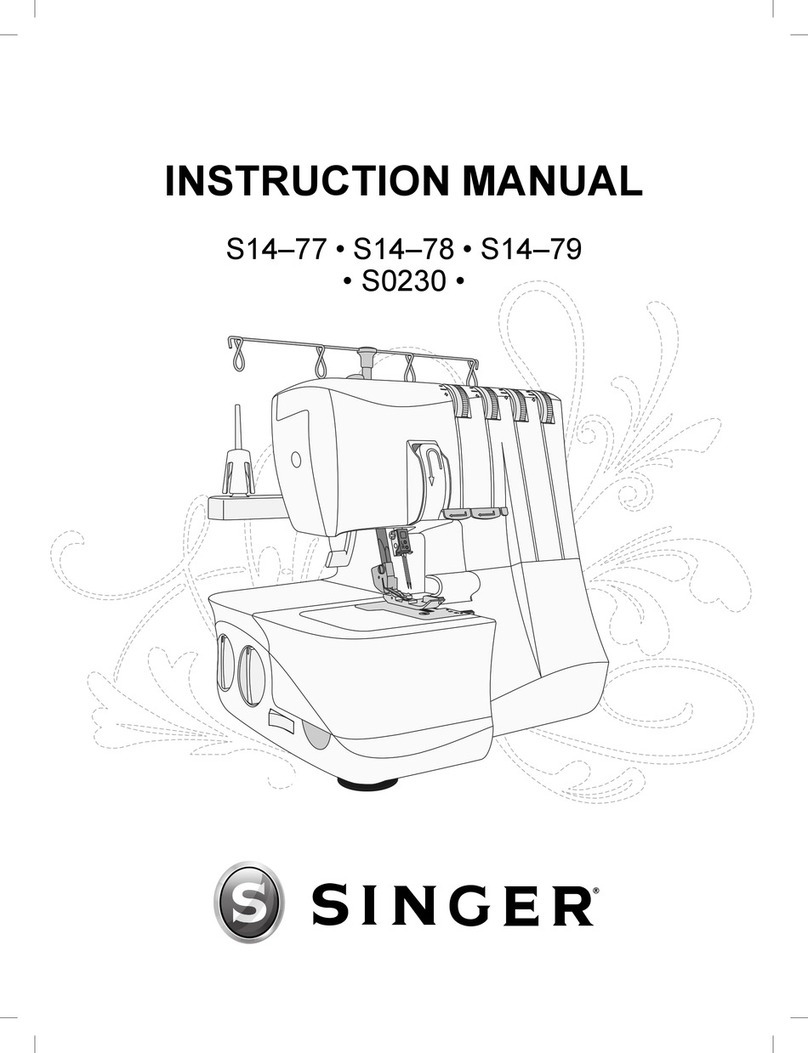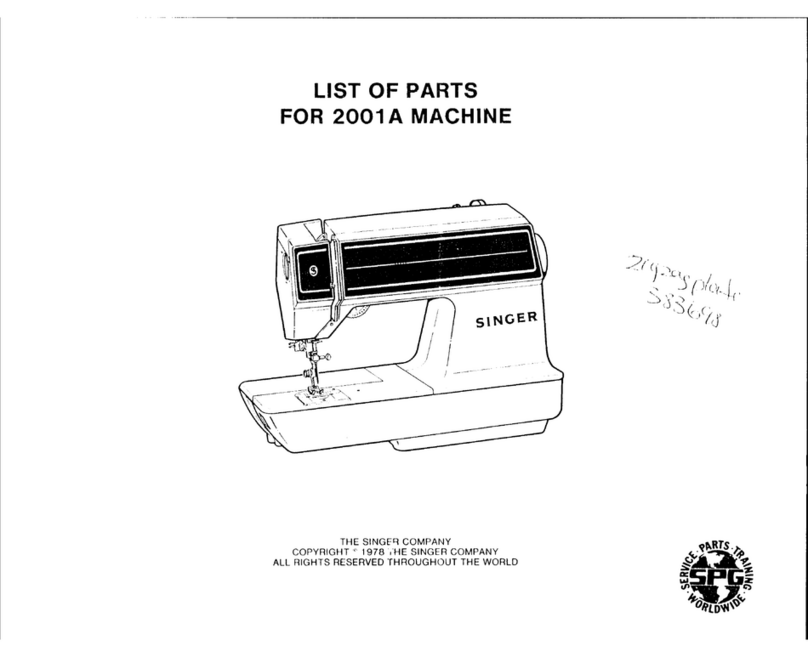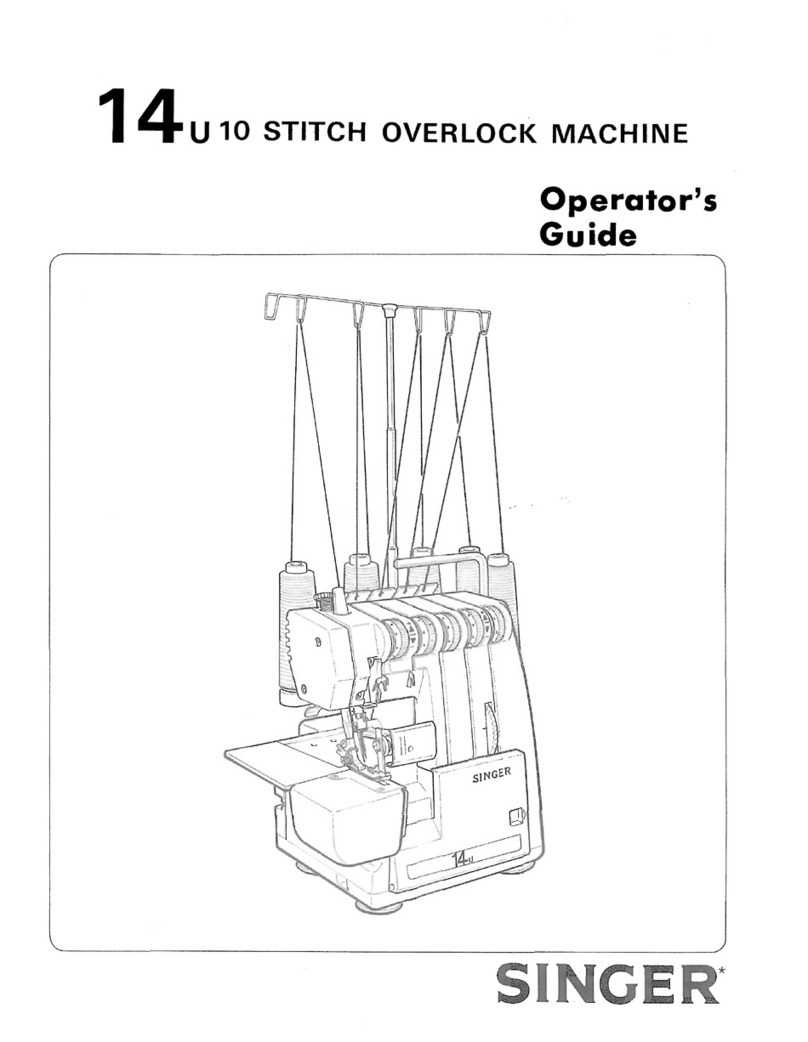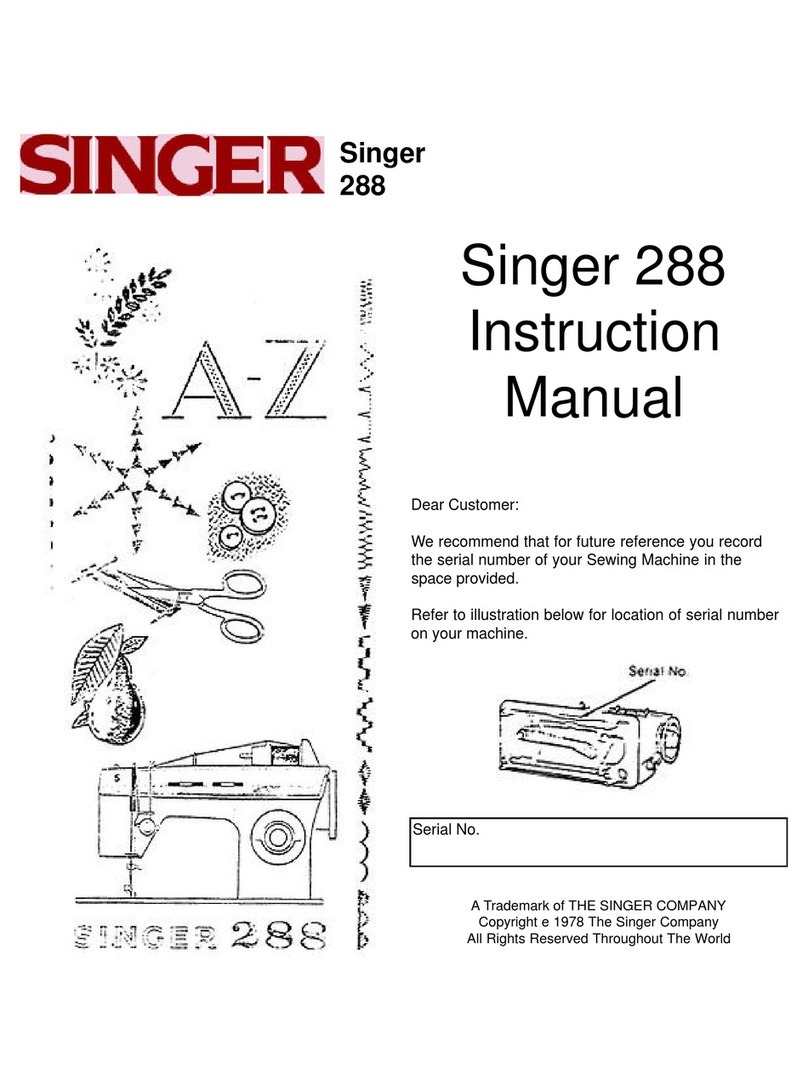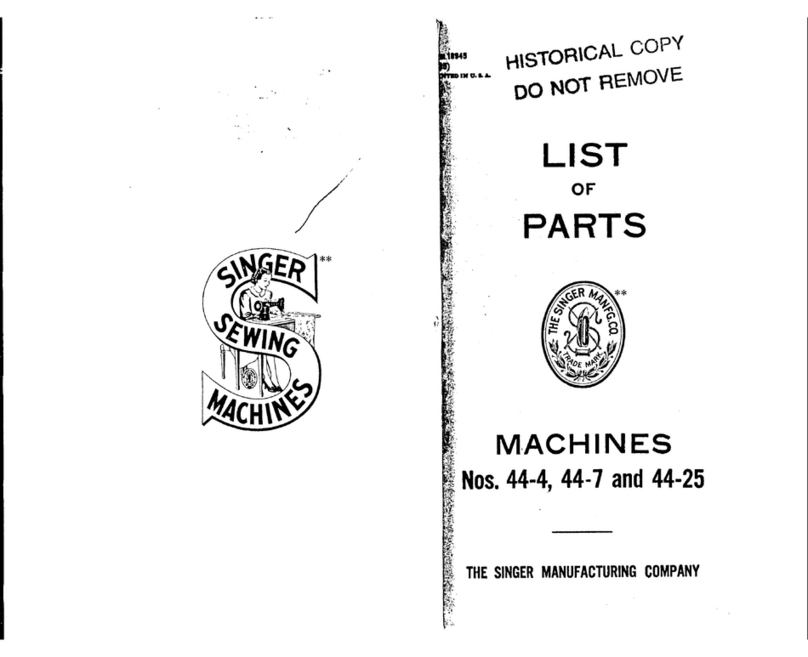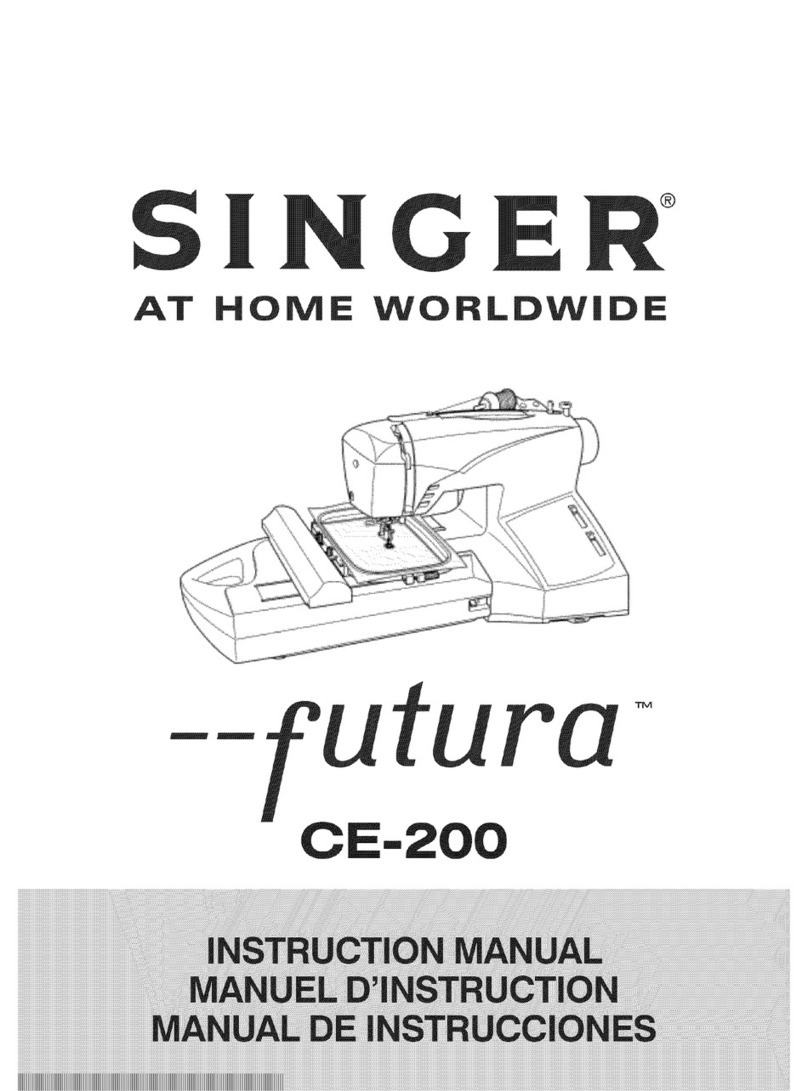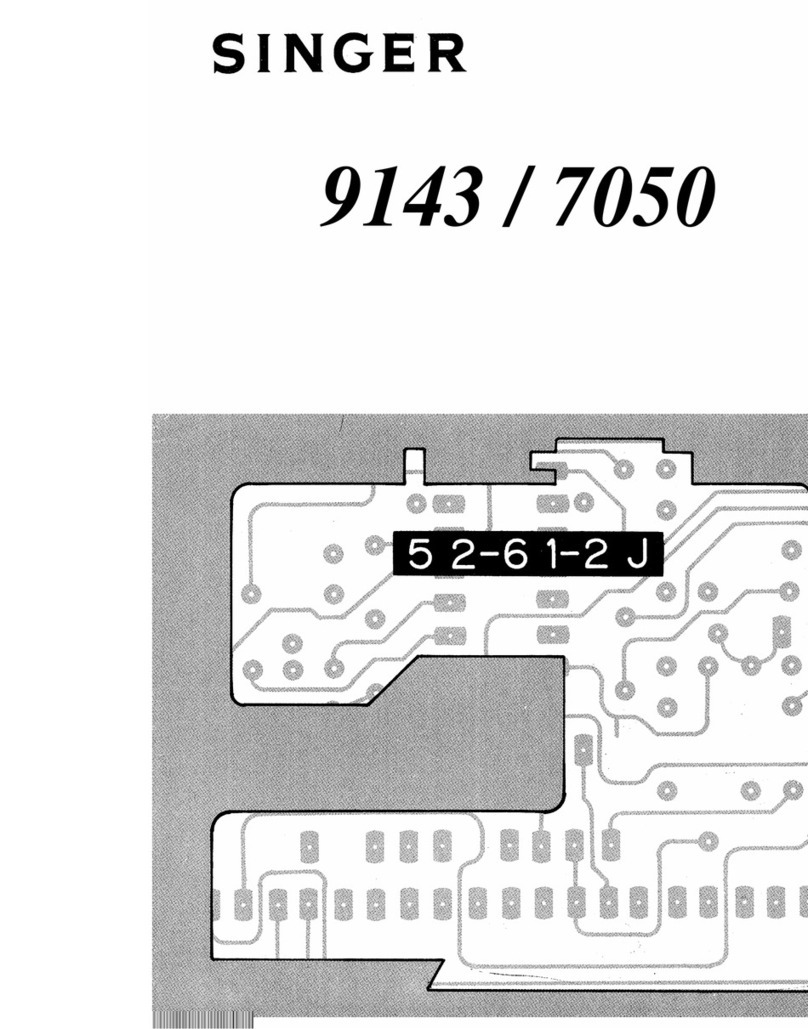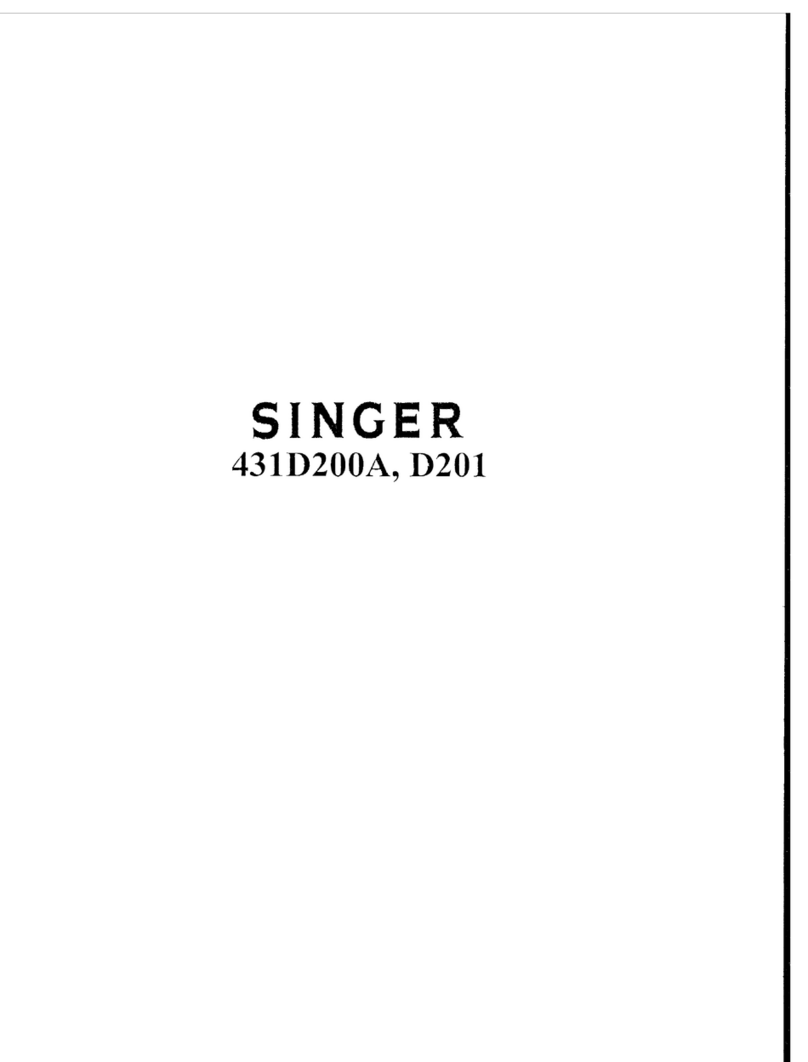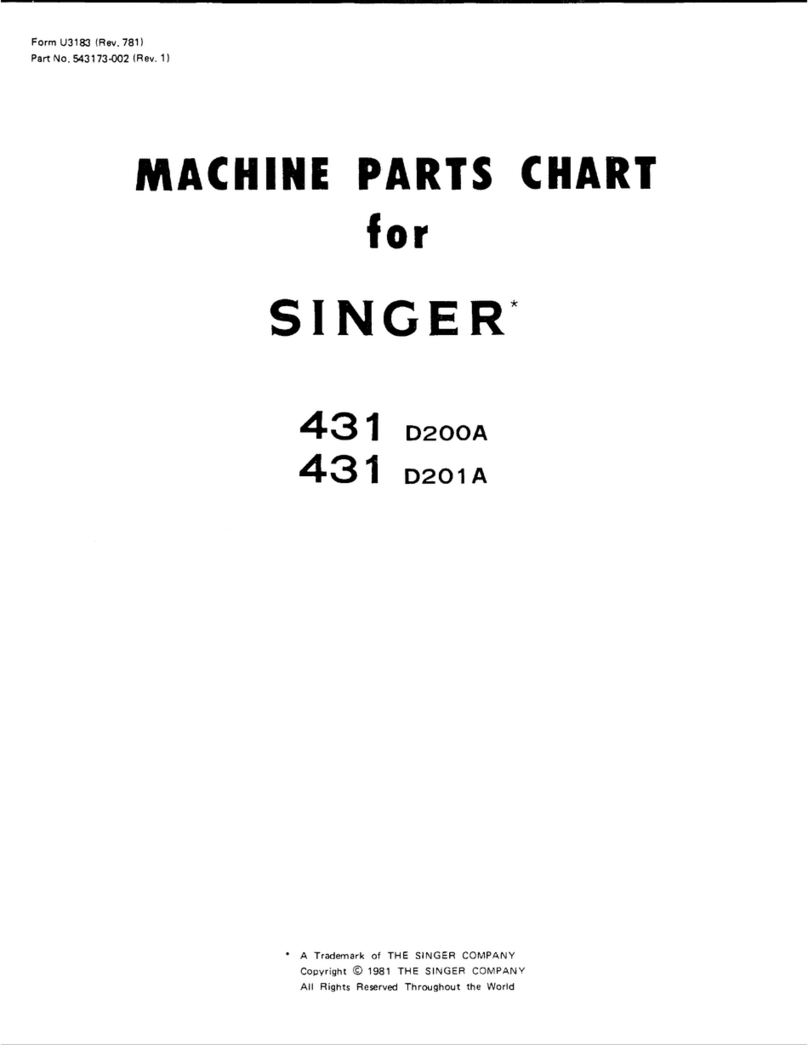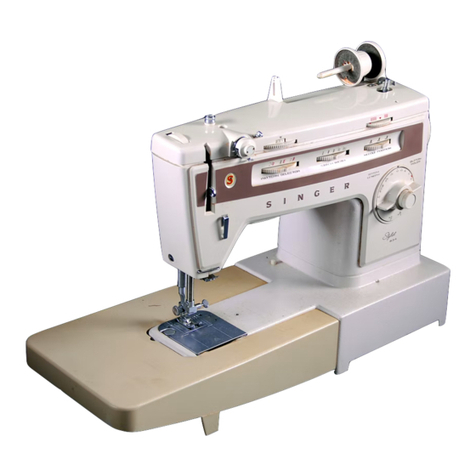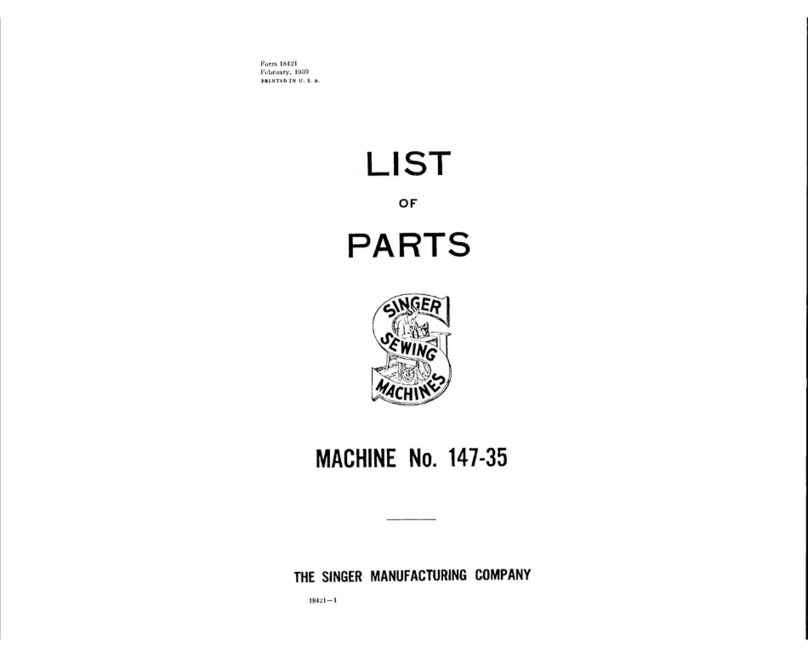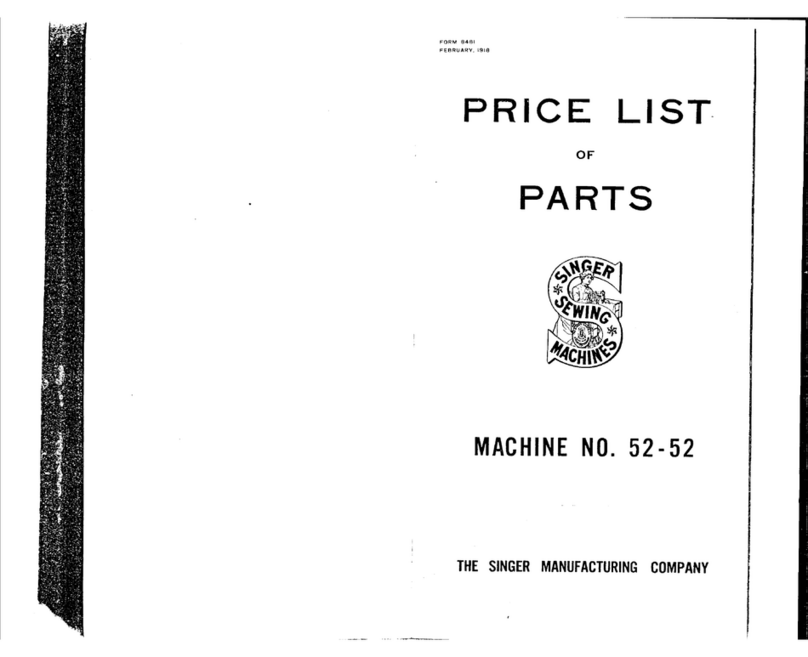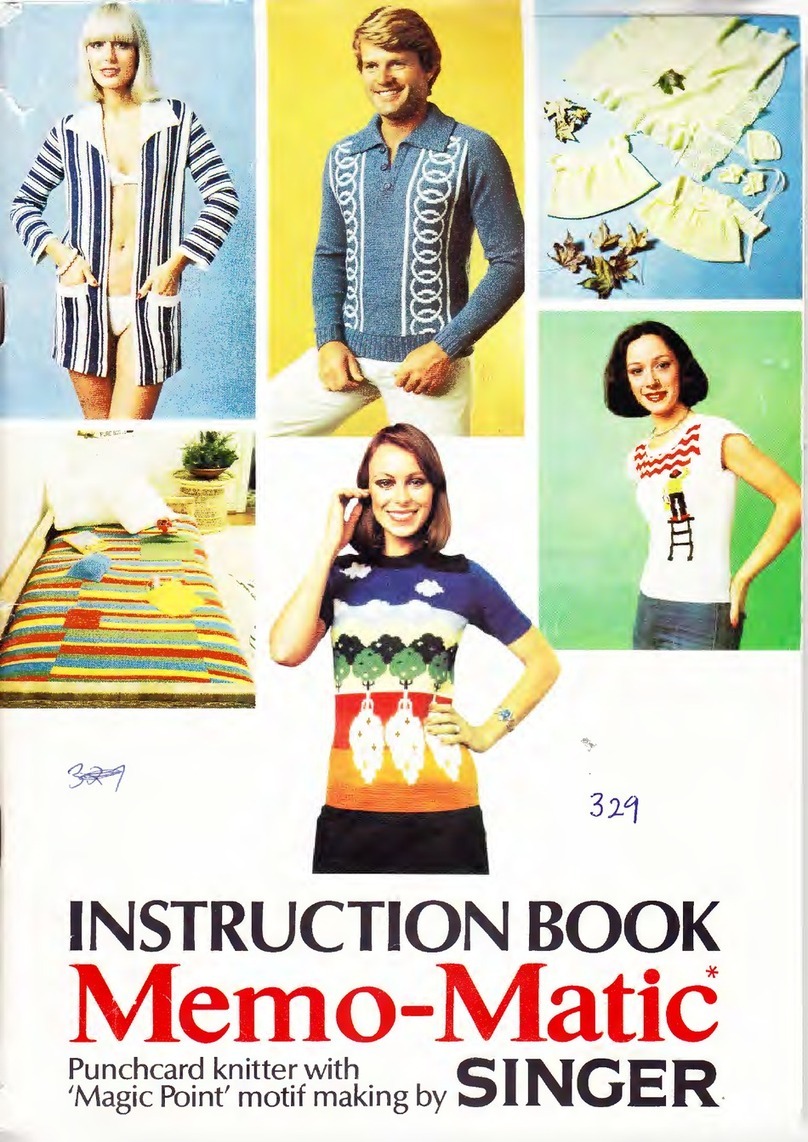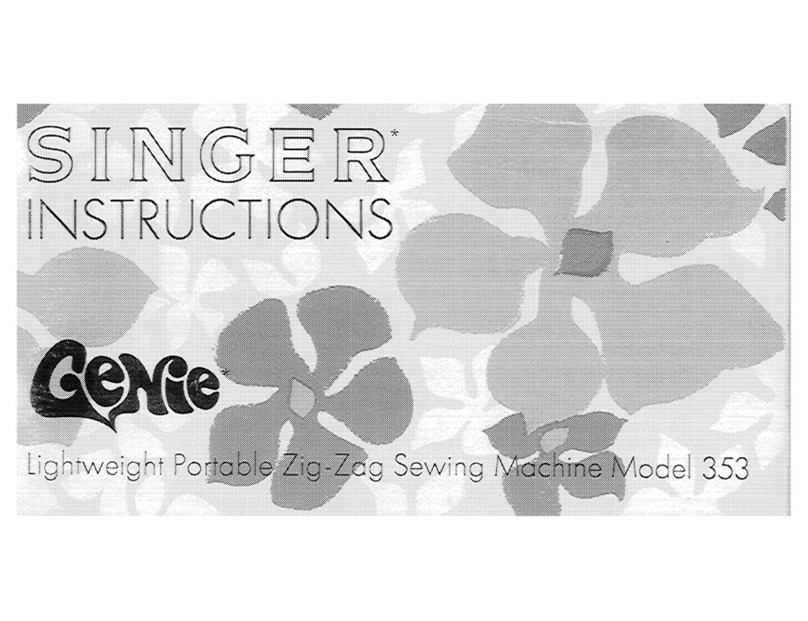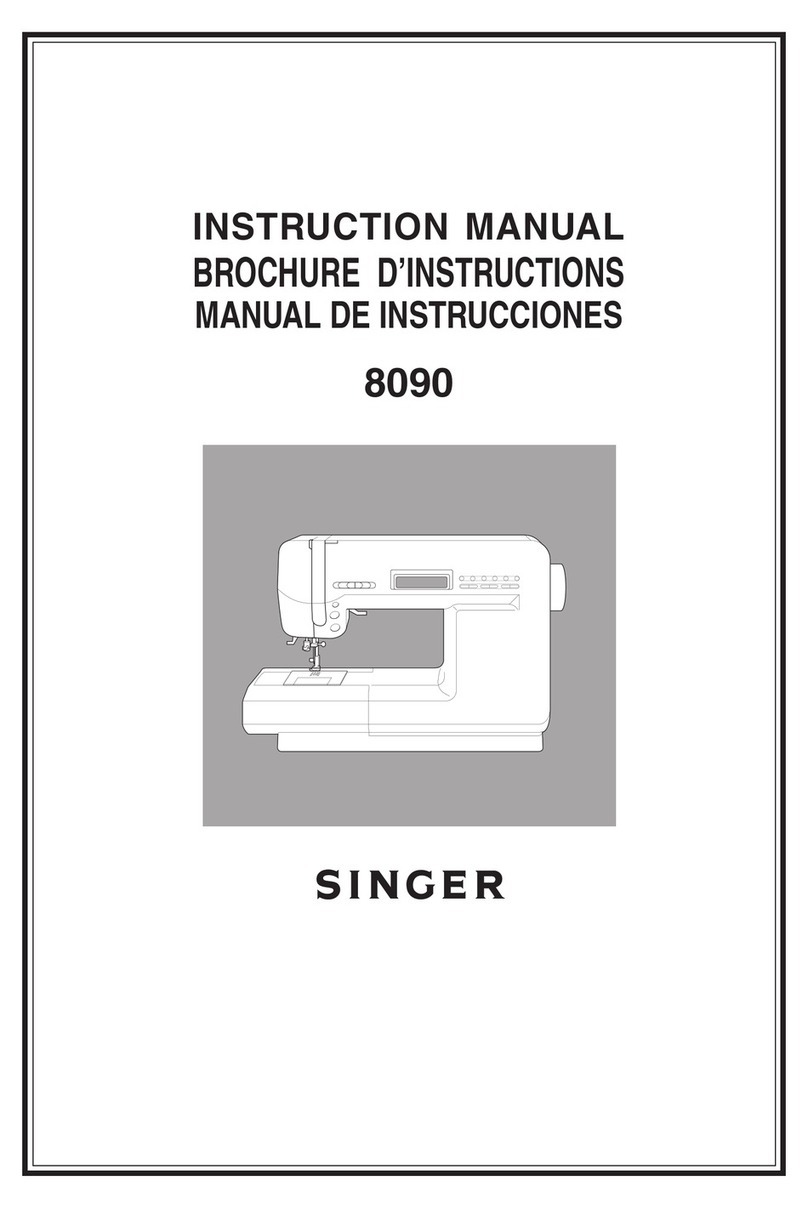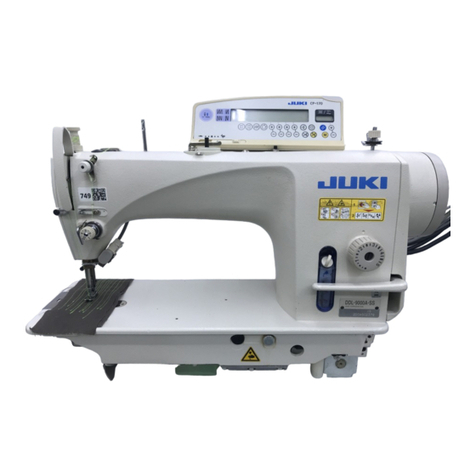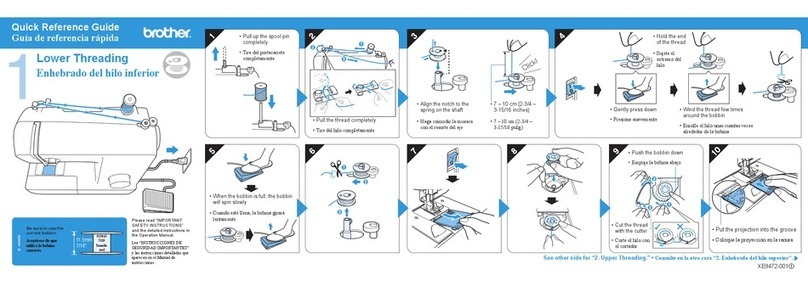
TABLE OF CONTENTS
1. Selection stitches & Auto tension..............................
2. Handy Reference Chart............................................
3. Accessories..............................................................
4. Needle Information...................................................
5. Principal Parts..........................................................
6. How to Open Looper Cover.....................................
7. Principal Parts Behind Looper Cover.......................
8. Preparation prior to sewing......................................
9. Removal and Replacement of Waste Tray..............
10. Preparation for Threading........................................
*Setting up the thread guide holder............................
*Anti-spill net..............................................................
*Spool cap..................................................................
11. How to Remove and Insert Needles........................
*Needle position.........................................................
*To remove needle(s).................................................
*To insert needle(s)....................................................
12. Threading the Machine...........................................
*Threading diagram...................................................
*Understanding the color code..................................
*To thread the machine correctly...............................
1) Threading the upper looper (Green)...................
2) Threading the lower looper (Red).......................
3) Threading the chain stitch looper (Brown)..........
4) Threading the overedge right needle (Blue).......
5) Threading the chain stitch needle (Orange)........
6) Threading the cover stitch needles.....................
Threading the cover stitch left needle (Orange)
Threading the cover stitch middle/chain stitch
needle(Blue).....................................................
Threading the cover stitch right needle(Green).
13. How to Change Threads / Tie on Method...............
14. How to Adjust the Stitch length...............................
15. How to Adjust the Seam width................................
*Width adjustment by changing needle position........
*Width adjustment with adjustment knob...................
16. How to Adjust the Presser Foot Pressure...............
17. Differential Feed......................................................
*Gathered overedge...................................................
*Stretch overedge......................................................
18. How to Disengage Movable Upper Knife................
19. To Convert upper Looper to Spreader....................
*To use the spreader..................................................
*To disengage to upper looper...................................
20. Standard overedge and Rolled Hem Stitching........
*To sew standard overedge.......................................
*To sew rolled hem....................................................
21. Chaining Off and Test Sewing............................
22. Settings and Sewing Instructions........................
1) Double chain stitch...........................................
2) 2-Thread Wrapped Edge Overlock...................
3) 2-Thread Overedge..........................................
4) 3-Thread Overlock............................................
5) 3-Thread Flatlock..............................................
6) 3-Thread Ultra Stretch Mock Safety Stitch.......
7) 4-thread Ultra Stretch Mock Safely Stitch.........
8) 4-Thread Safety Stitch......................................
9) 5-Thread Safety Stitch......................................
23. How to Sew a Cover Stitch.................................
24. How to Sew a Rolled hem..................................
1) 3-thread standard rolled hem stitching.............
2) 3-thread upper looper thread wrapped
rolled hem stitching...........................................
3) 2-thread standard rolled hem stitching.............
4) 2-thread lower looper thread wrapped
rolled hem stitching...........................................
25. Stitch Variations and Sewing Techniques...........
*Decorative Flatlocking..........................................
*How to sew an overlock blind hem.......................
*How to sew pin tucks...........................................
*Turning square corners........................................
*Pin placement.......................................................
*Securing the thread chain.....................................
*How to reinforce a seam.......................................
*Braiding by chaining off........................................
26. Machine Maintenance.........................................
*Cleaning the machine...........................................
*Oiling the machine................................................
*How to replace the moveable upper knife............
*How to exchange light bulb...................................
27.Optional Accessories...........................................
*Snap-on type presser foot....................................
*Optional presser feet............................................
1) Elastic foot.......................................................
2) Blind hem foot..................................................
3) Shirring foot......................................................
4) Pearl/Sequin foot.............................................
5) Piping/Cording foot..........................................
6) Taping foot.......................................................
28. Troubleshooting Chart.........................................
29. Relationship between Cloth, Thread and Need..
30. Specification........................................................
Page Page
38
39
39
41
42
43
44
45
46
47
48
49
54
55
55
56
56
58
59
60
60
61
62
62
63
63
64
64
64
65
66
67
67
68
68
68
68
68
68
68
69
70
71
5
8
9
9
10
12
12
12
13
14
14
14
14
15
15
15
15
16
16
16
17
17
18
20
21
23
25
25
26
28
30
31
31
31
31
32
33
33
34
35
36
36
36
37
37
37
1
2
3
4
